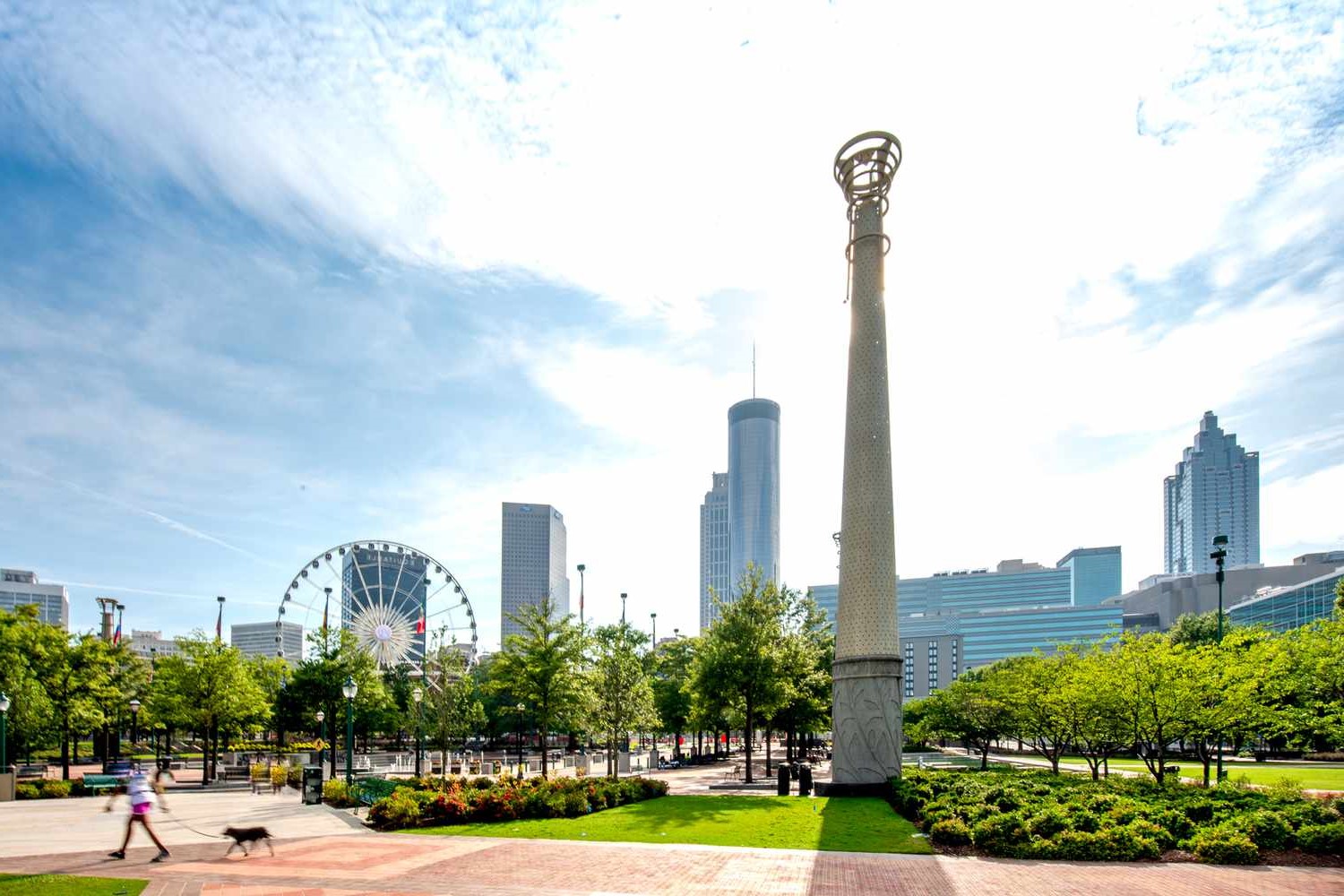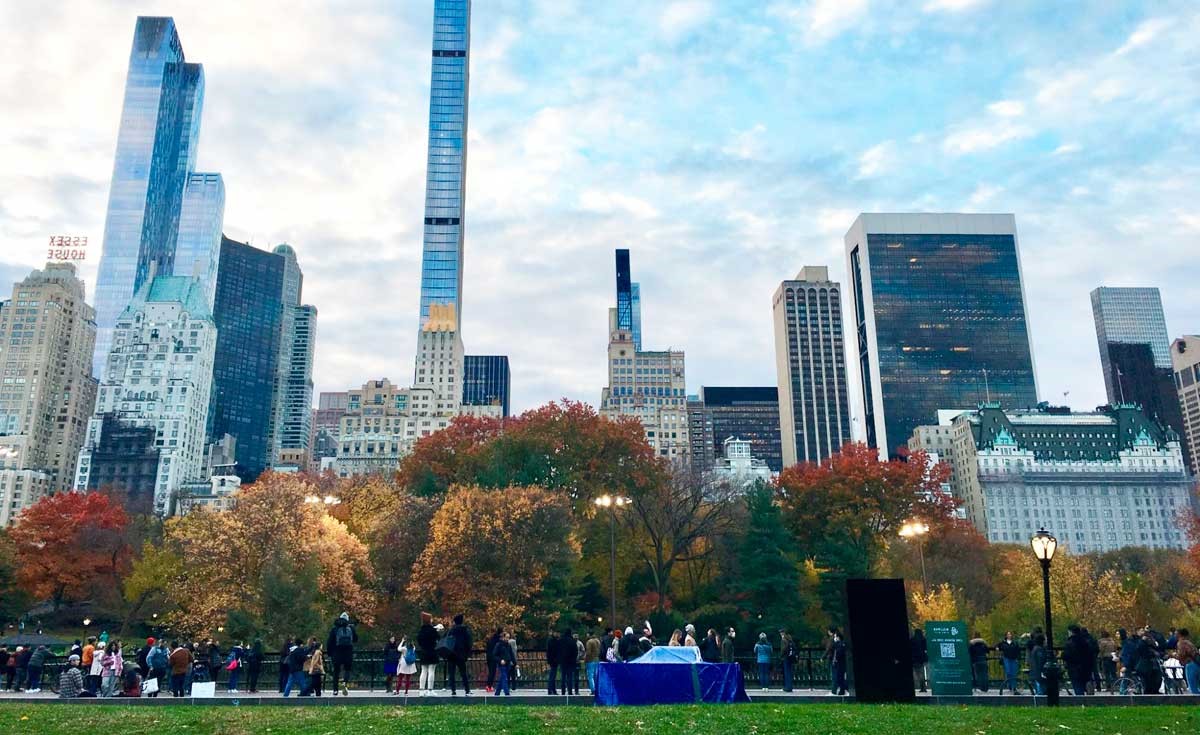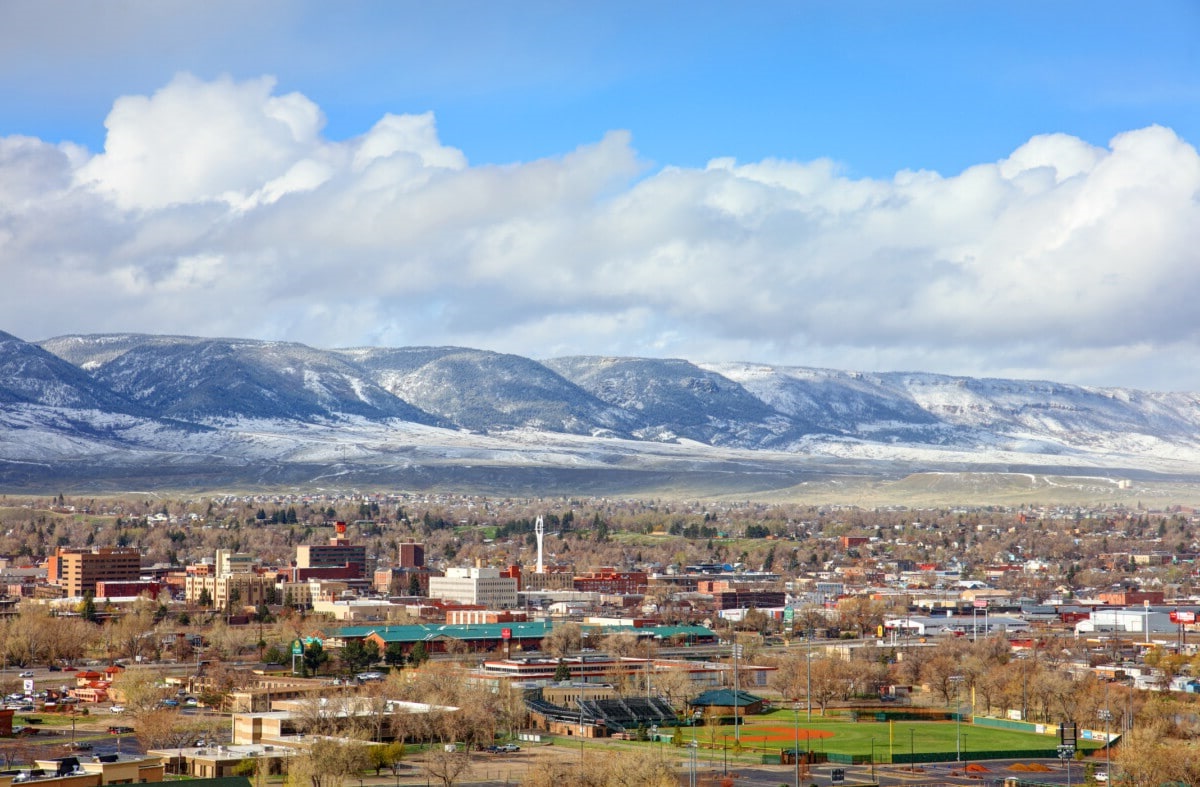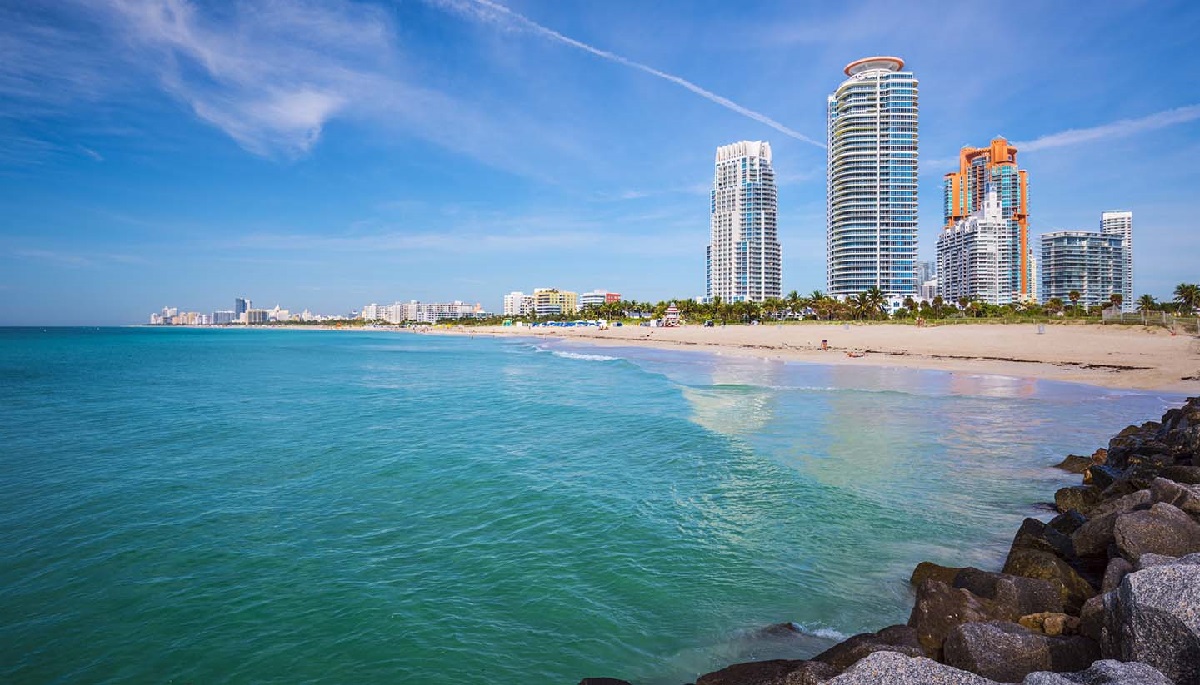Home>Weather and Climate>Palm Springs Weather: A Comprehensive Guide To Annual Climate
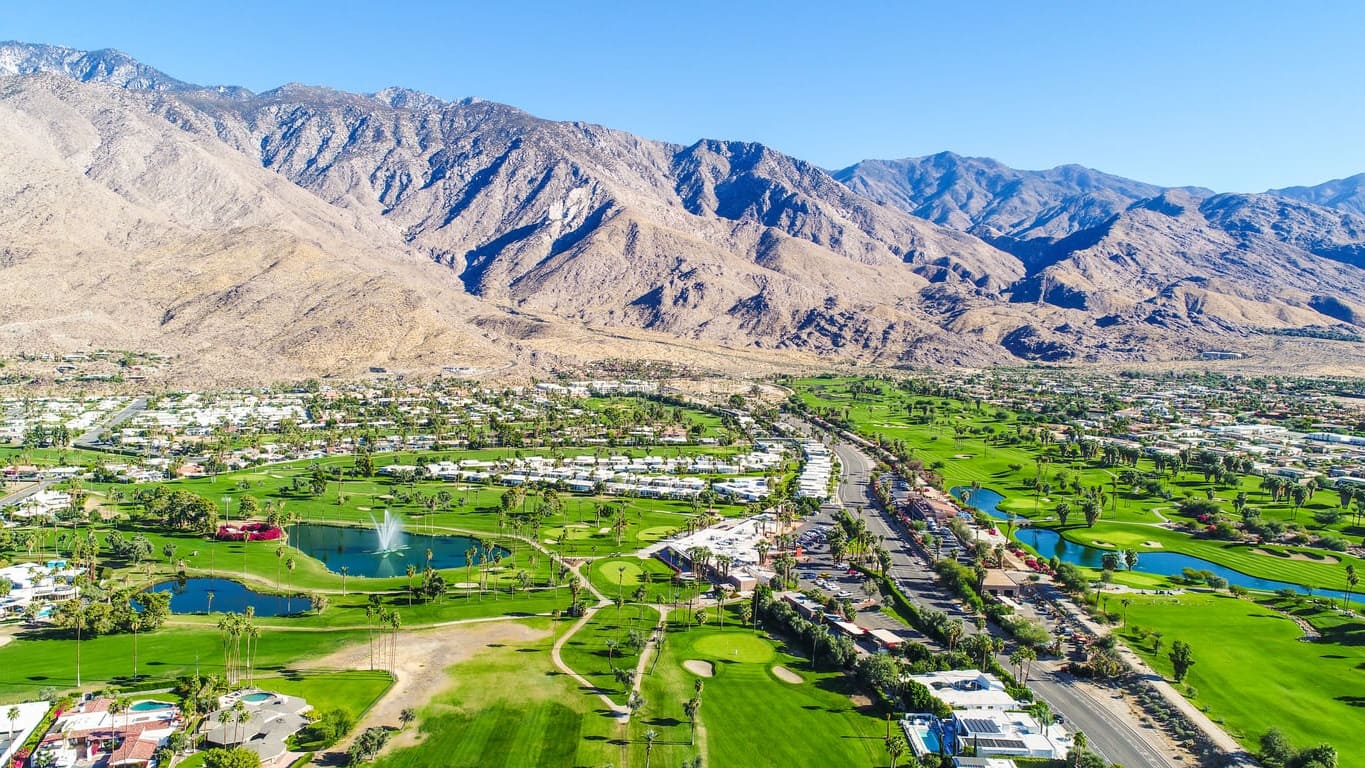

Weather and Climate
Palm Springs Weather: A Comprehensive Guide To Annual Climate
Published: April 6, 2024
Discover the diverse weather and climate of Palm Springs with our comprehensive guide. Plan your visit with insights into the annual climate trends.
(Many of the links in this article redirect to a specific reviewed product. Your purchase of these products through affiliate links helps to generate commission for Temperatures.com, at no extra cost. Learn more)
Table of Contents
Introduction
Palm Springs, a desert oasis nestled in the Coachella Valley of Southern California, is renowned for its stunning landscapes, luxurious resorts, and year-round sunshine. As visitors and residents alike bask in the warm, arid climate, it's essential to understand the unique weather patterns that define this captivating region. From scorching summers to mild winters, Palm Springs boasts a climate that beckons travelers seeking a sun-drenched escape.
In this comprehensive guide, we will delve into the nuances of Palm Springs' weather and climate, providing valuable insights into the annual temperature variations, precipitation levels, and occasional extreme weather events. Whether you're planning a leisurely golf retreat, a rejuvenating spa weekend, or an outdoor adventure in the surrounding desert, a thorough understanding of Palm Springs' weather patterns will ensure that you are well-prepared for a memorable and comfortable experience.
Join us as we embark on a journey through the desert climate of Palm Springs, unraveling the mysteries of its weather patterns and equipping you with the knowledge to make the most of your time in this captivating destination.
Understanding the Desert Climate
Nestled within the expansive Coachella Valley, Palm Springs is characterized by a desert climate that exudes a unique charm and allure. The region's climate is classified as a hot desert climate, also known as a "BWh" climate under the Köppen climate classification. This designation signifies the prevalence of scorching summers, mild winters, and minimal precipitation throughout the year.
The desert climate of Palm Springs is shaped by several key factors, including its geographical location, topography, and atmospheric conditions. Situated in close proximity to the San Jacinto Mountains, Palm Springs experiences a rain shadow effect, wherein the mountains obstruct moisture-laden air masses, resulting in limited rainfall within the valley. This phenomenon contributes to the arid nature of the region's climate, fostering an environment characterized by low humidity and abundant sunshine.
The desert climate also manifests in the form of dramatic temperature differentials between day and night. During the summer months, daytime temperatures often soar to sweltering heights, frequently surpassing 100°F (37.8°C). However, as evening descends, the arid desert air yields to rapid cooling, leading to significantly lower nighttime temperatures. This diurnal temperature variation is a hallmark of desert climates and is particularly pronounced in Palm Springs.
Furthermore, the absence of significant cloud cover in the desert sky allows for the unimpeded penetration of solar radiation, resulting in intense daytime heating. This solar radiation, coupled with the region's low humidity levels, contributes to the creation of a dry heat that is distinct from the humid conditions experienced in other climates.
The desert climate of Palm Springs also fosters an ecosystem uniquely adapted to arid conditions, with resilient flora such as cacti, succulents, and drought-tolerant shrubs thriving in the parched landscape. This adaptation to the desert environment further underscores the profound influence of the climate on the region's natural surroundings.
In understanding the desert climate of Palm Springs, it becomes evident that the interplay of geographical, topographical, and atmospheric elements has sculpted a distinctive environment characterized by its aridity, temperature differentials, and abundant sunshine. This understanding forms the foundation for appreciating the allure of Palm Springs' weather and the experiences it offers to residents and visitors alike.
Weather Patterns in Palm Springs
Palm Springs, ensconced within the Coachella Valley, is synonymous with a climate defined by consistent sunshine and arid conditions. The region's weather patterns exhibit distinct seasonal variations, each contributing to the unique allure of this desert oasis.
Summer:
During the summer months, Palm Springs experiences scorching temperatures, with daytime highs frequently surpassing 100°F (37.8°C). The relentless sun bathes the landscape in a golden glow, attracting sun-seekers and outdoor enthusiasts eager to revel in the warmth. The summer season, spanning from June to September, is characterized by clear skies and minimal precipitation, fostering an environment conducive to leisurely poolside retreats and invigorating rounds of golf amidst the stunning desert backdrop.
Fall:
As summer transitions into fall, Palm Springs undergoes a gradual cooling process, offering respite from the intense heat. The autumn months, from October to November, bring milder temperatures, making it an ideal time for outdoor activities such as hiking, biking, and exploring the surrounding natural wonders. The clear, crisp days of fall beckon visitors to savor the breathtaking vistas and partake in al fresco dining against the backdrop of the majestic San Jacinto Mountains.
Read more: Colorado Springs Weather: A Year-Round Guide
Winter:
Winter in Palm Springs is characterized by balmy days and cool evenings, creating a delightful contrast to the frigid conditions prevalent in many other regions. From December to February, daytime temperatures hover in the comfortable range of 70-80°F (21-27°C), making it an inviting destination for snowbirds seeking refuge from the harsh winter climates elsewhere. The clear, azure skies and gentle breezes of winter set the stage for outdoor pursuits, including exploring the city's vibrant arts scene, attending cultural festivals, and indulging in leisurely strolls through the palm-lined streets.
Spring:
As winter transitions into spring, Palm Springs bursts to life with a kaleidoscope of vibrant blooms and rejuvenated landscapes. The months of March to May herald the arrival of spring, accompanied by pleasantly warm temperatures and an explosion of color as wildflowers blanket the desert floor. Springtime in Palm Springs offers an idyllic setting for outdoor adventures, from exhilarating jeep tours through the rugged terrain to leisurely picnics amidst the blossoming flora.
In essence, the weather patterns in Palm Springs paint a vivid tapestry of seasonal transitions, each contributing to the region's allure and offering a diverse array of experiences throughout the year. Whether basking in the summer sun, savoring the mild days of winter, or reveling in the vibrant hues of spring, Palm Springs beckons visitors to immerse themselves in its captivating weather patterns and embrace the unique charm of this desert paradise.
Average Temperatures Throughout the Year
Palm Springs, with its desert climate, exhibits distinctive temperature variations across the seasons, shaping the experiences of residents and visitors throughout the year. Understanding the average temperatures is essential for planning activities and ensuring comfort while exploring this captivating desert oasis.
Summer:
During the summer months, Palm Springs sizzles under the relentless sun, with average daytime temperatures soaring well above 100°F (37.8°C). The scorching heat creates an environment conducive to leisurely poolside retreats and refreshing dips in crystalline waters. Evenings offer a welcome reprieve as temperatures cool down, providing opportunities for outdoor dining and strolls beneath the star-studded desert sky.
Fall:
As summer transitions into fall, Palm Springs experiences a gradual cooling, with average temperatures ranging from 70-90°F (21-32°C). The milder climate sets the stage for outdoor pursuits, from invigorating hikes through the rugged terrain to leisurely rounds of golf amidst the stunning desert backdrop. The pleasant temperatures of fall beckon visitors to savor the natural beauty of the region while partaking in al fresco dining and cultural events.
Read more: Colorado Springs Weather: A Year-Round Guide
Winter:
Winter in Palm Springs brings balmy days and cool evenings, with average daytime temperatures hovering in the comfortable range of 70-80°F (21-27°C). This delightful contrast to the frigid conditions prevalent in many other regions makes Palm Springs an inviting destination for snowbirds seeking refuge from the harsh winter climates elsewhere. The mild winter temperatures create an ideal setting for exploring the city's vibrant arts scene, attending cultural festivals, and indulging in leisurely strolls through the palm-lined streets.
Spring:
As winter gives way to spring, Palm Springs experiences a rejuvenation of landscapes and a burst of vibrant blooms. The average temperatures during spring range from 75-90°F (24-32°C), creating an idyllic setting for outdoor adventures amidst the blossoming flora. Springtime in Palm Springs invites visitors to embark on exhilarating jeep tours through the rugged terrain, partake in leisurely picnics amidst the vibrant wildflowers, and revel in the natural splendor of the desert awakening from its winter slumber.
In essence, the average temperatures throughout the year in Palm Springs offer a diverse tapestry of experiences, from the intense heat of summer to the mild, inviting climate of winter and the vibrant blooms of spring. Understanding these temperature variations is crucial for planning and enjoying the myriad outdoor activities and cultural offerings that define the allure of Palm Springs.
Rainfall and Precipitation Levels
Palm Springs, with its desert climate, is renowned for its limited rainfall and arid conditions throughout the year. The region's precipitation levels exhibit a stark contrast to the lush landscapes found in other climates, shaping the unique allure of this sun-drenched oasis.
On average, Palm Springs receives a meager 5 inches (127 mm) of rainfall annually, with the majority of precipitation occurring sporadically during the winter months. The winter season, spanning from December to March, brings intermittent rainfall to the desert landscape, infusing the arid terrain with fleeting moments of rejuvenation. These sporadic showers contribute to the transient transformation of the desert, coaxing vibrant wildflowers to bloom and adorning the rugged terrain with a fleeting veil of greenery.
The limited rainfall in Palm Springs is attributed to its geographical location and the rain shadow effect created by the towering San Jacinto Mountains. As moisture-laden air masses encounter the formidable barrier of the mountains, they are forced to ascend, cool, and release their moisture on the windward side, leaving the Coachella Valley, including Palm Springs, in the rain shadow. This meteorological phenomenon results in diminished precipitation within the valley, perpetuating the region's arid climate and sun-drenched allure.
The scarcity of rainfall in Palm Springs fosters an environment characterized by clear, azure skies and abundant sunshine, creating an idyllic setting for outdoor pursuits and leisurely relaxation. The arid conditions also contribute to the proliferation of drought-tolerant flora, including iconic species such as the majestic Joshua trees and resilient cacti, which have adapted to thrive in the parched desert landscape.
While the limited rainfall and arid climate define the essence of Palm Springs, the sporadic showers that grace the region during the winter months serve as a poignant reminder of nature's capacity for rejuvenation and renewal. These ephemeral moments of precipitation infuse the desert with a transient vitality, offering a glimpse of the region's resilience and the captivating beauty that emerges in the wake of the rain.
In essence, the rainfall and precipitation levels in Palm Springs, though minimal, play a pivotal role in shaping the region's natural landscapes and fostering an environment that celebrates the ephemeral beauty of desert rejuvenation. Understanding the nuances of precipitation in this arid oasis provides a deeper appreciation for the resilience of the desert ecosystem and the captivating allure of Palm Springs' weather patterns.
Read more: How Much Snow Does Nashville Get Annually?
Wind and Dust Storms
Palm Springs, ensconced within the arid expanse of the Coachella Valley, is occasionally subject to wind and dust storms that punctuate the sun-drenched tranquility of the desert landscape. These meteorological phenomena, while infrequent, contribute to the dynamic nature of the region's climate and shape the experiences of residents and visitors alike.
The wind and dust storms in Palm Springs are primarily attributed to the interplay of atmospheric conditions and the topographical features of the surrounding terrain. As gusty winds sweep across the desert floor, they have the potential to stir up fine particles of sand and dust, creating swirling clouds that obscure visibility and impart an ethereal quality to the landscape. These dust storms, often accompanied by strong gusts, lend an air of drama to the desert environment, underscoring the raw power of nature and its capacity to sculpt the terrain.
The occurrence of wind and dust storms in Palm Springs is most prevalent during the transitional seasons of spring and fall when atmospheric instability and fluctuating pressure systems can give rise to turbulent wind patterns. These seasonal transitions, characterized by shifting temperatures and atmospheric dynamics, set the stage for the occasional emergence of gusty winds that sweep through the valley, carrying with them the potential for dust storms to materialize.
While wind and dust storms are a testament to the untamed beauty of the desert, they also necessitate a degree of caution and preparedness. Visibility may be significantly reduced during these meteorological events, posing challenges for motorists and outdoor enthusiasts. As such, it is advisable to exercise prudence and remain informed about weather forecasts when venturing into the desert landscape, particularly during periods when wind and dust storms are anticipated.
In the wake of these atmospheric displays, the desert landscape undergoes a transient transformation, with the swirling dust settling to reveal the rugged beauty of the terrain. The aftermath of a dust storm often leaves behind a gossamer veil of fine particles, lending a surreal quality to the surroundings and infusing the air with a subtle earthy fragrance.
In essence, the occasional occurrence of wind and dust storms in Palm Springs adds a touch of drama to the region's climate, underscoring the dynamic interplay of atmospheric forces and the rugged allure of the desert environment. These fleeting meteorological events serve as a reminder of the untamed beauty of the desert and the captivating allure of Palm Springs' weather patterns.
Extreme Weather Events
Palm Springs, with its desert climate, is generally characterized by consistent sunshine and arid conditions. However, the region is not immune to occasional extreme weather events that punctuate the tranquility of the desert landscape. While these events are infrequent, they play a significant role in shaping the dynamic nature of Palm Springs' climate and warrant a degree of preparedness and vigilance.
One of the notable extreme weather events that can impact Palm Springs is the rare occurrence of winter storms. These atypical weather systems, originating from the Pacific or the Gulf of Mexico, have the potential to bring uncharacteristic precipitation to the region, including rain, sleet, or even snow. The arrival of a winter storm in Palm Springs creates a captivating juxtaposition, as the arid desert landscape is momentarily blanketed in a veil of white, transforming the surroundings into a picturesque winter wonderland. While these events are rare, they evoke a sense of wonder and offer a unique opportunity to witness the desert adorned in a rare coat of snow.
Another extreme weather event that warrants attention in Palm Springs is the occasional occurrence of intense heat waves. During these periods, temperatures can soar to exceptionally high levels, surpassing 110°F (43.3°C) and posing challenges for outdoor activities and prolonged exposure to the sun. Heat waves demand heightened awareness and precautions, necessitating adequate hydration, seeking shade, and minimizing outdoor exertion to mitigate the effects of the scorching temperatures. While heat waves are a natural facet of the desert climate, they underscore the importance of understanding and respecting the formidable forces of nature that shape the region's weather patterns.
Additionally, Palm Springs is susceptible to occasional flash floods, particularly during the rare instances of intense rainfall. The arid terrain, unable to readily absorb large volumes of water, can give rise to swift and powerful torrents that cascade through washes and canyons, posing risks to low-lying areas. These flash floods underscore the transient nature of precipitation in the desert and highlight the need for vigilance during periods of inclement weather.
In essence, while Palm Springs is renowned for its sun-drenched climate, it is essential to acknowledge the potential for rare extreme weather events that punctuate the region's tranquility. These events, from winter storms to intense heat waves and flash floods, underscore the dynamic nature of the desert climate and the need for preparedness and vigilance in the face of nature's occasional displays of power.
Tips for Dressing and Packing for Palm Springs
When preparing for a visit to Palm Springs, it's essential to consider the region's unique desert climate and tailor your wardrobe and packing list accordingly. Whether you're planning a leisurely retreat, an outdoor adventure, or a cultural exploration, the following tips will ensure that you are well-equipped to embrace the sun-drenched allure of this captivating destination.
1. Lightweight and Breathable Clothing:
Opt for lightweight, breathable fabrics such as cotton and linen to stay cool and comfortable amidst the desert heat. Loose-fitting tops, sundresses, and shorts are ideal choices for daytime excursions, allowing for ample airflow and ventilation.
2. Sun Protection:
Shield yourself from the intense desert sun by packing wide-brimmed hats, sunglasses with UV protection, and sunscreen with a high SPF rating. These essentials will safeguard your skin and eyes while exploring outdoor attractions and savoring the abundant sunshine.
3. Layering for Temperature Variations:
Given the diurnal temperature differentials in Palm Springs, it's advisable to pack layers for transitioning between warm days and cool evenings. Lightweight jackets, cardigans, or shawls can provide added warmth during the cooler hours, ensuring comfort throughout the day.
4. Comfortable Footwear:
Select comfortable and supportive footwear for exploring the desert terrain and navigating the city's vibrant streets. Sandals, walking shoes, and breathable sneakers are excellent choices for leisurely strolls, hiking trails, and outdoor activities.
5. Evening Attire:
For evening outings and dining experiences, consider packing elegant yet lightweight attire. Flowing maxi dresses, linen trousers, and collared shirts offer a blend of sophistication and comfort, allowing you to savor the enchanting ambiance of Palm Springs after sunset.
6. Hydration Essentials:
Stay hydrated during your explorations by carrying a reusable water bottle. The arid climate of Palm Springs necessitates ample hydration, and having a water bottle on hand ensures that you can replenish fluids while immersing yourself in the region's natural and cultural attractions.
7. Outdoor Adventure Gear:
If you plan to embark on outdoor adventures such as hiking, biking, or exploring the desert wilderness, consider packing essential gear such as a daypack, hiking shoes, and moisture-wicking apparel. These items will enhance your comfort and safety while engaging in exhilarating outdoor pursuits.
8. Evening Accessories:
Enhance your evening attire with lightweight scarves, statement jewelry, and versatile accessories. These accents can elevate your ensemble for evening engagements while complementing the relaxed yet refined ambiance of Palm Springs.
By incorporating these tips into your dressing and packing preparations, you can ensure that your visit to Palm Springs is characterized by comfort, style, and readiness to embrace the region's captivating desert climate. Whether indulging in leisurely pursuits, embarking on outdoor escapades, or savoring the city's cultural offerings, these considerations will enhance your experience and allow you to immerse yourself fully in the sun-drenched allure of this desert oasis.
Conclusion
In conclusion, Palm Springs, with its captivating desert climate, beckons visitors to immerse themselves in a sun-drenched oasis characterized by consistent sunshine, arid landscapes, and a dynamic interplay of seasonal transitions. The region's weather patterns, from scorching summers to mild winters and vibrant springs, paint a vivid tapestry of experiences, each contributing to the unique allure of this desert paradise.
Understanding the nuances of Palm Springs' climate is essential for planning memorable excursions, embracing outdoor adventures, and savoring the region's cultural offerings. The arid terrain, sculpted by the sun's relentless embrace and occasional wind and dust storms, offers a canvas for exploration and discovery, inviting visitors to revel in the untamed beauty of the desert.
As visitors prepare for their sojourn in Palm Springs, the tips for dressing and packing underscore the importance of tailoring attire to the region's unique climate, ensuring comfort and readiness for the diverse array of experiences that await. From lightweight, breathable clothing to sun protection essentials and hydration gear, these considerations equip travelers to embrace the sun-drenched allure of Palm Springs with style and preparedness.
While the region's limited rainfall and occasional extreme weather events punctuate the tranquility of the desert landscape, they serve as poignant reminders of nature's capacity for rejuvenation and renewal. The ephemeral beauty of desert blooms, the transient transformation brought by rare winter storms, and the captivating allure of the region's resilience amidst heat waves and flash floods underscore the dynamic nature of Palm Springs' climate.
In essence, Palm Springs invites visitors to embark on a journey through a desert oasis where the sun's golden embrace, the rugged allure of the terrain, and the vibrant hues of seasonal transitions converge to create an enchanting tapestry of experiences. Whether basking in the warmth of summer, savoring the mild days of winter, or reveling in the vibrant blooms of spring, Palm Springs offers a captivating escape into the heart of the desert, where the interplay of climate and natural beauty unfolds in a mesmerizing symphony.
As travelers venture into the sun-drenched embrace of Palm Springs, they are poised to immerse themselves in a realm where the desert's allure, shaped by the interplay of climate and natural forces, invites exploration, relaxation, and a profound appreciation for the untamed beauty of this captivating destination.
